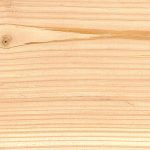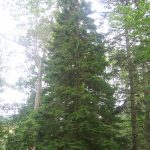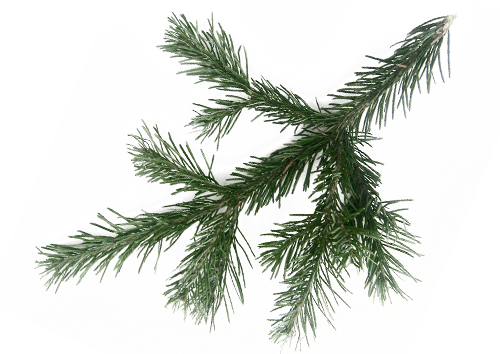
- Sibirisk pichta (S)
- Siberian Fir (GB)
- Sibirische Tanne (D)
Distribution
- Fir trees have spread mainly throughout the frigid and temperate zones of the northern hemisphere.
- Siberian fir does not grow wild in Finland but it is a commonly cultivated decorative tree species.
- As a runaway from cultivation, fir tree renews itself easily. Thus, it has adapted well to its new habitat in Finland. Fir tree species hybridize easily with each other.
Habitat
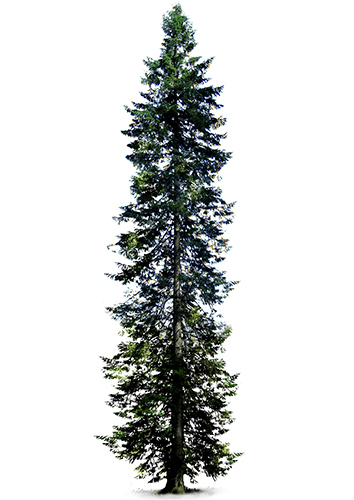 Siberian fir thrives in fresh soil that is rich in nutrients. It has much the same requirements for habitat as the Finnish spruce.
Siberian fir thrives in fresh soil that is rich in nutrients. It has much the same requirements for habitat as the Finnish spruce.- Fir tree is vulnerable to frost, yet it can be found as far as the northernmost Lapland.
- Fir tree, traditionally grown in yards, breaks easily in windy weather. After the top has broken, the uppermost branches will form a new tree top. Therefore, many fir tree have several tops.
Growth characteristics
- Fir tree is evergreen and it resembles the Finnish spruce.
- Siberian fir can grow as much as 30 m in height. Its branches are fairly short and the dark green crown is fairly thin. In spacious places the branches remain green almost to the ground level, but densely grown fir trees are quite branchless.
- The grey trunk is covered by smooth bark that has resin blisters.
- Fir cones stand upright instead of hanging like cones of other conifers.
- Upon reaching maturity, the cones disintegrate, releasing winged seeds.
- The siberian fir is not very long-lasting, as the lower stem of the tree is susceptible to rot at an older age. It withstands temperatures below zero better than Finnish spruce, but is instead more vulnerable to spring frosts.
- The sharp tree tops that branch out at an older age are typical landmarks in the yards of old manor houses and yards in cultural landscapes.
Properties of the wood
- The sapwood and heartwood are light in colour and not distinguishable from each other. The annual rings are usually thick, even and weakly distinguishable.
- The wood of fir tree is soft and more fragile than the wood of a common spruce. It does not have resin blockages like the common spruce wood.
- The wood is the lightest of the trees that grow in Finland. The air-dry wood weighs approximately 300 kg/ m3.
- Sawn wood does not crack, shrink or warp almost at all. In addition, it is easy to work.
- Since fir trees are grown as decorative trees and they are seldom cultivated for the wood production, the species is rare as sawn timber.
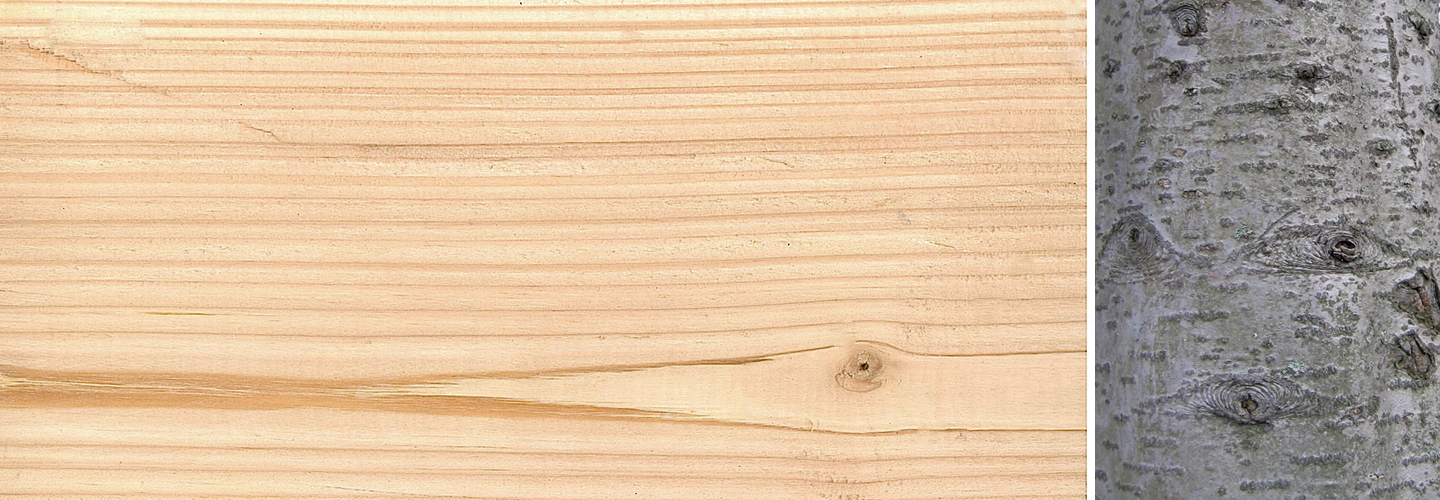
Usage
- Fir tree can be used for the same purposes as the common spruce; for building inner structures, for example panels and sauna benches.
- Fir tree is suitable for sawn planks and panels and structures that do not require bending strength.
- It is also suitable for objects that require lightweight and stable wood.
- A notable use of fir tree is the cultivation of Christmas trees. This is due to its beautiful colour and shape.
- Fir tree is also used as raw material in the plywood, paper and grindery industries.
- To some extent the wood is used as raw material for cellulose in its natural habitats.
- In Russia, ethereal oil, used in industry, is distilled from the needles and resin of siberian fir.
